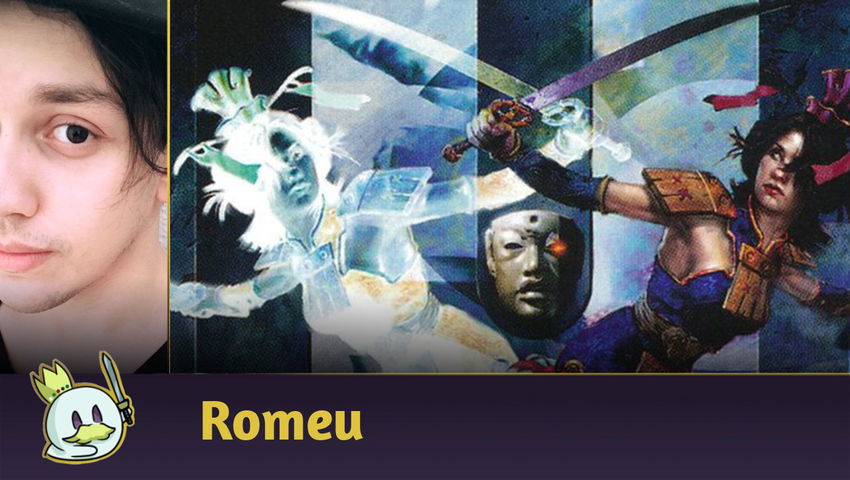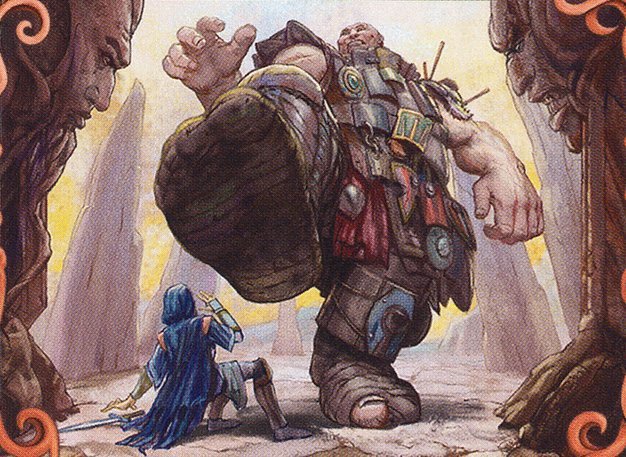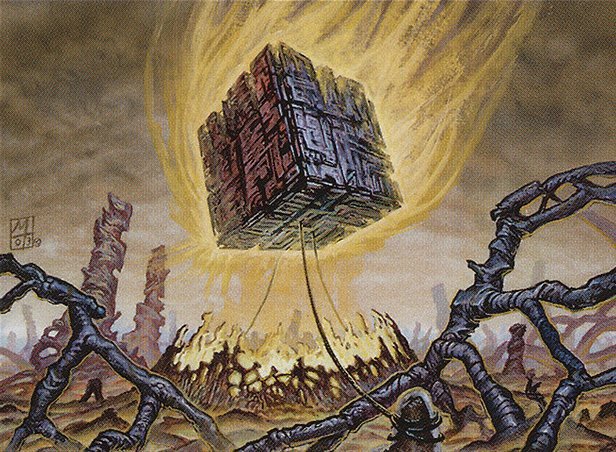Have you ever been interested in a format but didn't know exactly which deck you'd like to play on it? Afraid to invest in a list and not like how it operates, or just have no idea how the main decks work?
When you sit at a table playing games, do you prefer quick games where you attack with your creatures, or longer games where every move you make needs to be calculated? Or are you the kind of person who prefers the allure of seeing the magic of interactions between your cards work while your opponent watches? What game proposal do you want to make the most of your experience?
This article is dedicated to players who are interested in Pauper but don't know enough about it yet to know what decks they would like to play with or what strategies fit what you usually pilot in other formats. In the quest to facilitate the answers to these questions, I have categorized the main and most famous archetypes in the Metagame or in the community, based on their strategies and with an overview of what to expect from each of their respective lists, covering the main archetypes within each category, as well as explaining how they work and their pros and cons.
This is the last chapter in the series where, after reviewing the Aggro, Control, and Midrange macro archetypes, we will come to the last remaining category — Combo.
Combo in Pauper
We can say that the relationship between Pauper and Combo decks is complicated, to say the least — either they break the format completely and need to be banned, or they don't reach the point of severely impacting the Metagame and becoming part of the format's best viable options.
We have examples in both categories, but among the combos that broke Pauper, the most notorious cases include Izzet Drake, a combo-control that generated infinite mana with the interaction between Ghostly Flicker, Archaeomancer and Peregrine Drake, Infect during the period when Invigorate was legal, giving a mighty free spell that allowed for consistent turn 2 and 3 wins, and Storm, where due to the high access to efficient rituals and cantrips, essentially all cards with this ability that won the game on their own were eventually banned.
Currently, basically all existing combos in Pauper require major deckbuilding concessions to work, as their pieces need a specific base: Elves obviously need numerous elves, while Cycling Storm needs a lot of Cycling cards, and so on — Making them less efficient in adapting to the Metagame and, therefore, more vulnerable also to the point that any well-prepared player can have a positive winrate against them.
Storm

You know what all the above cards have in common? They're all banned from Pauper.
Although there are no longer lists on the main tiers that fit this category, Storm is most responsible for the times the format was broken.
The main reason for this feat is because of how Storm works, creating a copy of the spell for every previously played spell, this strategy is extremely difficult to interact within the format, as Counterspell only deals with one copy, while its lists have enough redundancy that Duress and other discards aren't enough to stop the combo, just delay it for a turn or two at best.
In addition, Pauper supports all the best Storm enabler options available in Magic: The Gathering, with Dark Ritual, Rite of Flame, Manamorphose Lotus Petal, cantrips and very high-quality draw spells such as Preordain and Night's Whisper, as well as spells to mitigate the natural weaknesses that some of these spells would have, such as Flaring Pain, First Day of Class or Goblin Bushwhacker, making this strategy too powerful to exist in a format regardless of time and occasion, as we have seen during the long period where Chatterstorm was legal.
Cycling Storm
This doesn't mean that players don't try to reproduce and improvise their own versions of Storm with "build your own Grapeshot", and the most successful example is Cycling Storm.

In it, we have the interaction between 1-mana Cycling creatures alongside Songs of the Damned to create a gigantic pseudo-Dark Ritual and cast enough spells to return several creatures from your graveyard to your hand with Reaping the Graves, restarting the cycle until it finds another copy of both spells recycling their cards, while Drannith Stinger deals consecutive damage to the opponent.
I believe that Cycling Storm is the closest we have to this category currently on Pauper, and the only one that has results in the Top 8 or Top 32 of Challenges and other events. However, its base is far more interactive than true Storm has ever been, and its natural weakness to graveyard hate makes it an easy strategy to deal with if it grows too much.
Elves
Another common combo category in Pauper are based on creatures that share some element. Typically, a specific creature type or ability that allows the player to create explosive interactions capable of winning the game in the same turn.
This is the case with Elves, which fits into the Aggro-Combo spectrum and is in a gray area between them.

Instead of trying to do an “insta-win” route, Elves prepare their battlefield to the point where interactions between their creatures will lead to inevitability, either with an absurd amount of Lys Alana Huntmaster tokens, tons of mana with Priest of Titania, a single high-power attack with Timberwatch Elf, drawing ten or more cards with Distant Melody, or just preventing the opponent from winning the game with Wellwisher's lifegain.
Among most of these interactions, one creature stands out, and we can consider it as the centerpiece of any “combo” in this deck: Quirion Ranger.

The more Quirion Rangers you have in play, the more mana, life, or power ups you can generate with your other creatures, plus other small benefits like reusing land drops and mana dorks early.
Many may wonder why I'm considering Elves in the combo category instead of Aggro, and the reality is that I've wondered a few times where exactly it fits among the macro-archetypes, but with its strategy fully focused on its interactions and with high deckbuilding concessions to work, I suppose that despite working relatively well in the Aggro category, it's its mechanics which generates an absurd value that make it a true competitor in the Metagame, putting it then on the Combo spectrum.
That said, despite being one of the fastest decks in the format, Elves has a natural weakness against sweepers alongside counterspells or an efficient clock, making it an easy target for Fiery Cannonade and Krark-Clan Shaman, plus an efficient mix of removals and counterspells alongside Suffocating Fumes.
Walls
Still on the tribal spectrum, Walls Combo tries to reproduce the same proposal as Elves in terms of adding absurd amounts of mana with its creatures, but with the difference of being entirely focused on finding and casting the pieces that allow it to have access to infinite mana.

Walls seeks to enchant Axebane Guardian with Freed from the Real or pair it with Galvanic Alchemist to tap it, generating blue mana and using the enchantment's ability to untap it, producing infinite mana that can be used to deal infinite damage with Valakut Invoker or Secret Door.
What makes Walls an interesting option is the fact that it is extremely redundant in finding the combo and holding the game: Drift of Phantasms finds any missing piece, while Lead the Stampede and Winding Way helps the player to keep their resources even in front of removals, especially if it doesn't come accompanied by a clock.
However, despite not being vulnerable to sweepers like Elves, it is extremely passive to counterspells on the right pieces to stop the combo, and most lists lack an efficient alternative plan that allows it to change its stance and follow a distinct route to winning the match.
Moggwarts
Goblins Combo, or Moggwarts if you prefer, recently emerged with the release of First Day of Class in Strixhaven, and is perhaps the healthiest and most efficient combo the format currently has.

The interaction between Persist and First Day of Class (where the creature returns to the battlefield with a -1/-1 counter, gets a +1/+1 counter, and both counters cancel each other out) turns Putrid Goblin into an infinite sac target, generating countless possibilities with the most diverse options.
Moggwarts leverages the format's existing tribal Goblin concept to add consistency to its plan, while also offering some of the best options for sacrificing Putrid Goblin — Skirk Prospector for infinite mana and Goblin Sledder for infinite power. With the most common route being infinite mana, the player still needs to win the game, and Goblin Matron helps to find Flamewave Invoker to deal infinite damage, while Makeshift Munitions can be used for this same purpose.

What makes Moggwarts so efficient is that it can also operate as an interactive Aristocrats deck and enjoy the best card advantage mechanics available in the format today, with Deadly Dispute and Experimental Synthesizer, as well as recurring its creatures with Unearth and tutor the combo pieces with Shred Memory.
However, like many other combos, it can't operate as well in its Plan B as a more dedicated archetype would, as well as being extremely vulnerable to several categories of interaction, especially Hydroblast and Spellstutter Sprite, making it an easy target for Blue-Based decks.
Familiars
I believe that among the existing combos on Pauper currently, Familiars must be the most famous and the one with the most enthusiasts in the competitive scene.

Also falling into theFlicker Decks category, Familiars look to resort to the interaction between Ghostly Flicker and Archaeomancer, but instead of generating absurd mana like Tron, it makes Ghostly Flicker cheaper with Sunscape Familiar for value.
With two copies of Sunscape Familiar, one Ghostly Flicker and one Archaeomancer, you can produce infinite ETB and cast, generating infinite life with God-Pharaoh's Faithful or infinite mill with Sage's Row Denizen.

The list also has Snap alongside the cost reducers and Azorius Chancery to generate arbitrary amounts of mana and/or repeat consecutive patterns that trigger the most diverse creatures, while also functioning as efficient interactions when you're forced to play fair.

Familiars is also the most efficient among the combos in having an efficient alternative plan, with several spells that are naturally good against the most varied strategies, making it possible to follow a "beatdown" route with Mulldrifter alongside counterspells and removals, while its other creatures slow the game down enough to put the player far ahead of their opponent.
However, not only is Familiars one of the most difficult decks to pilot in Pauper, it is also extremely tiresome to play, especially in Magic Online, due to the very high number of clicks required to complete each step in its combos, in addition to the fact that the Azorius colors aren't the best suited for board interaction, something that perhaps explains the splash increase we're seeing on lists these days.
Inside Out
Inside Out is Pauper's most contradictory combo because it has the potential to be the fastest and most efficient in the format, while also being the hardest to build in the long run.

Understanding how this combo works is easy: you attack with Tireless Tribe, cast Inside Out and discard cards from your hand to increase Tireless Tribe's power until it deals lethal damage.
Despite being the only one that virtually requires only two pieces, Inside Out actually requires both spells and a total of five cards in hand to deal 21 damage to your opponent. An incredibly easy task in the first few turns — to the point that it's the only turn 2 combo currently available — but it continually becomes harder to pull off as the game extends.

Before the fateful Blue Monday, Inside Out was the best strategy to play Gush (which added up to four cards in your hand, a 16 power boost to Tireless Tribe) and Gitaxian Probe, which provided the information to know if it was the right time to perform the combo, or if there was a need to create a backup with Circular Logic beforehand.

Today, players resort to the most varied interactions to keep their hands full to perform the combo, while the fact that it only requires eight to twelve maindeck slots allows for the extended use of additional resources that create an alternative strategy.
Mulldrifter and Ephemerate together yield up to six cards for their controller, Squadron Hawk gives us three extra copies of it when it enters the battlefield, and Whiteout can be returned from the graveyard while returning snow lands to your hand — All of these options generate enough card advantage to make the combo relevant on late-game.
However, Inside Out is extremely vulnerable to interactions and removals: from Snuff Out to Electrickery, not counting counterspells and discards, make this strategy very risky, as the opponent can always wait for the opportune moment to trade with your creature when you've discarded a huge amount of cards, fundamentally ending the game by putting them in an extremely advantageous position, while you won't be able to recover so easily.
Egg Tron
With the banning of Bonder's Ornament and Prophetic Prism making Flicker Tron far too inconsistent, players looked for other uses for the absurd amount of mana generated by Urza lands, and this led to Egg Tron.

In this case, the list uses the famous 1 + 1 +1 = 7 math to cast consecutive artifacts, which cost can be reduced by Foundry Inspector, and put counters on Golem Foundry, sacrificing them to carry out its effects.
Then, cast Mystical Teachings to fetch Frantic Salvage, returning all artifacts to the top of the deck and repeating the process while returning Frantic Salvage to the bottom with Conjurer's Bauble, to fetch it again, repeating the loop as long as we have the mana to do so and creating an arbitrary number of 3/3 Golem tokens.

Mystical Teachings can also search for Storm spells to hold the game, gaining an insane amount of life with Weather the Storm, or clearing the board with Scattershot.
There are dozens of other options that are also available in this combo, such as Fangren Marauder, or Myr Retriever, but the current version is incredibly efficient in what it sets out to do.
However, like other non-interactive combos, Egg Tron suffers significantly from disruption effects, especially if used by an experienced player who knows which pieces need to be removed or countered at all costs, and with Dust to Dust being the most used card on sideboards today and Cleansing WIldfire being a common option in the maindeck of various strategies, its reach within tournaments is currently limited.
Conclusion
We have reached the end of the Pauper Archetype Guide series.
Regarding the Combo category, there are several other lists that work based on a specific combination of cards, but many of them lack the necessary pieces to be really important in the competitive scene, which is precisely the greatest danger in this macro-archetype: a single wrong addition, or an unexpected downshift, can take a combo to the top and break Pauper completely, as we've seen many times before.
I really hope that this guide can be useful to readers and the community to better understand what Pauper is and where its competitive landscape is, just as I hope that in a few years time we will be able to revisit this guide and assess how much things have changed in since then.
Thanks for reading!













— Kommentare 0
, Reaktionen 1
Sei der erste der kommentiert